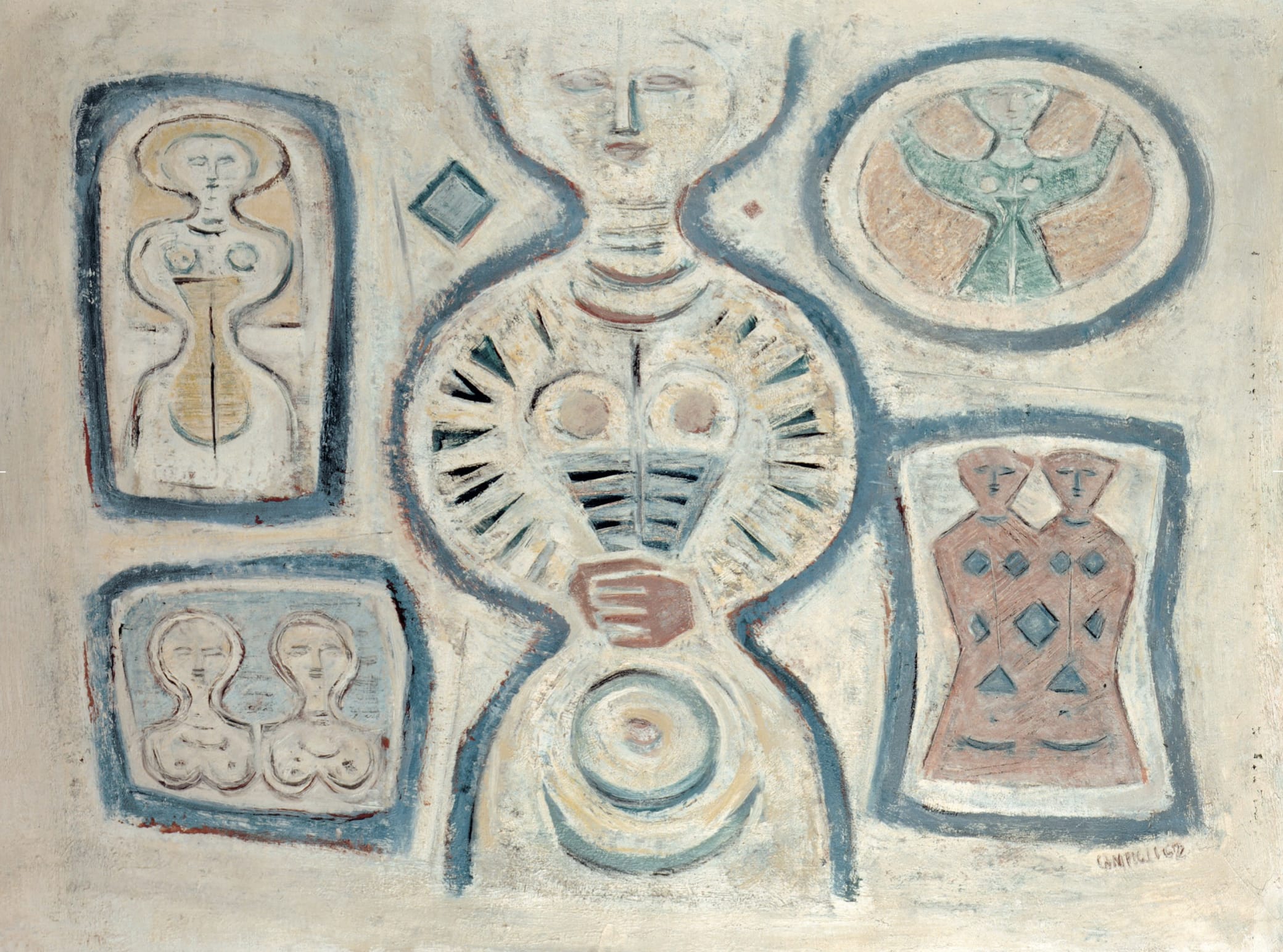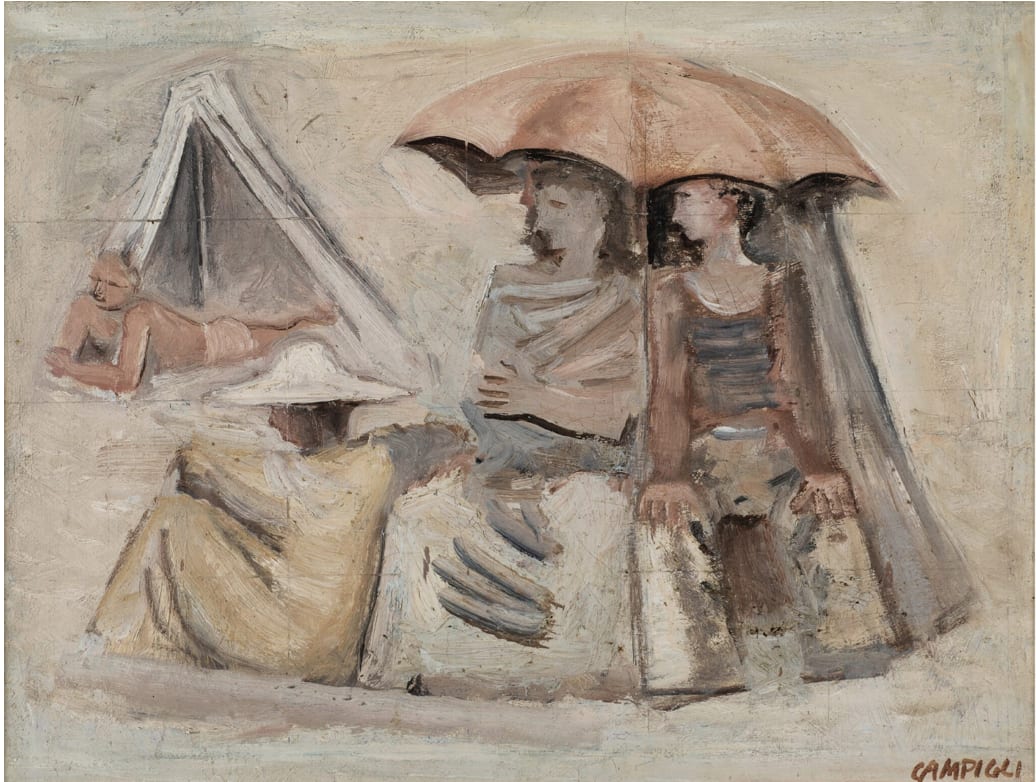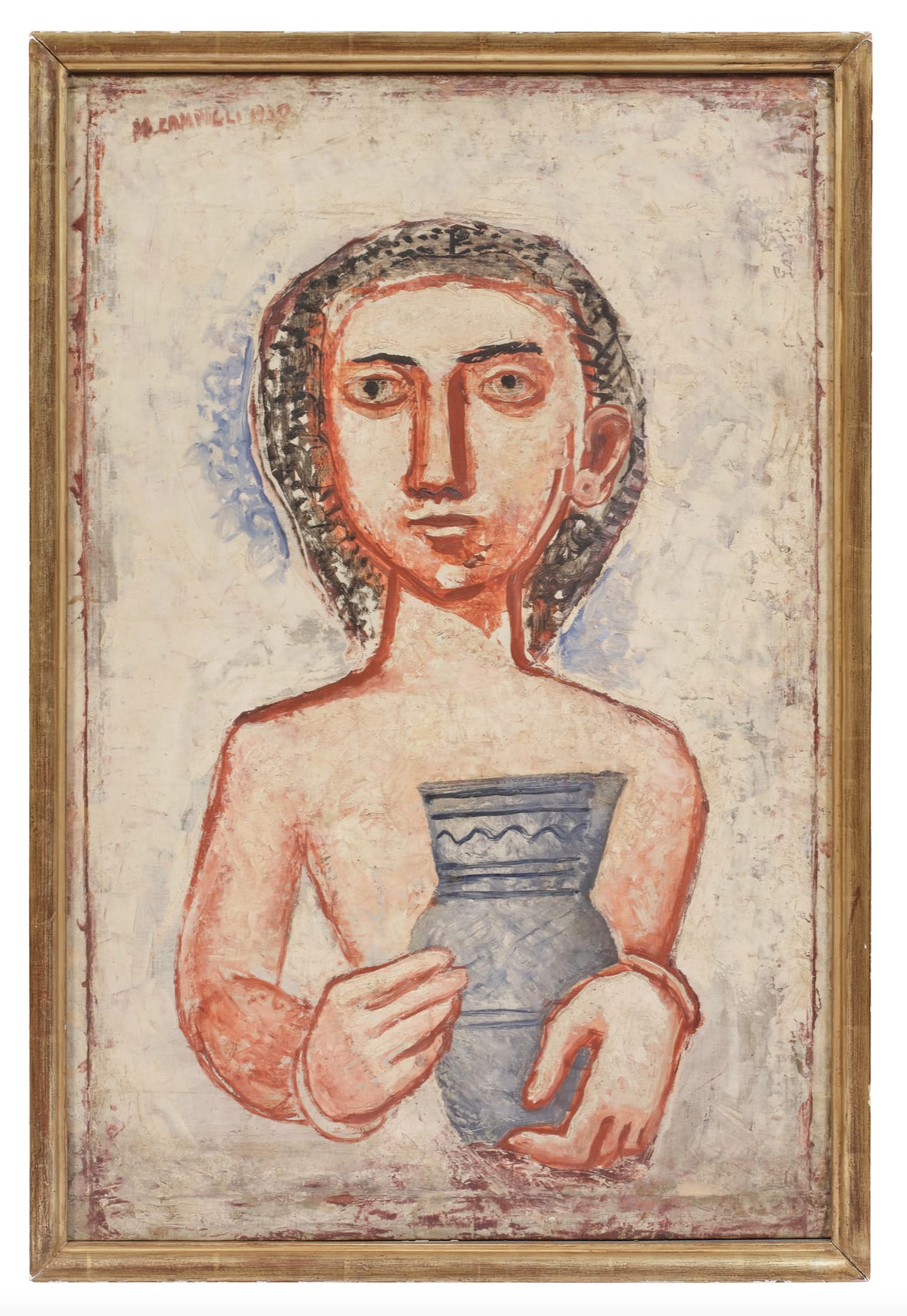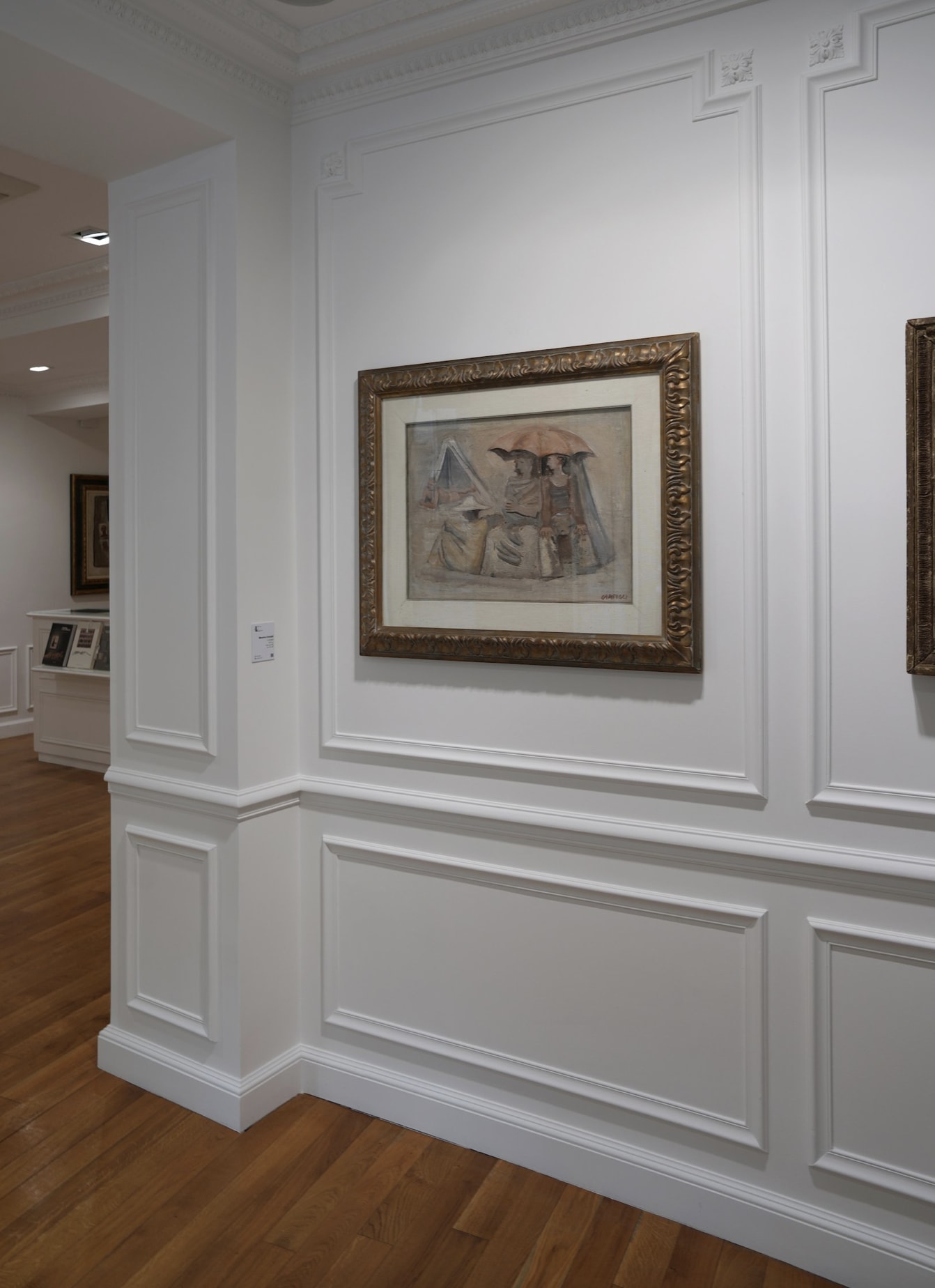“A primitive sensibility steeped in Mediterranean echoes” – this could define the artistic pursuit of Massimo Campigli (Berlin, 1895 – Saint-Tropez, 1971), where ancient inspirations were translated into images that remain strikingly relevant today.
Recognized as one of the most important artists of the 20th century, Campigli is the protagonist of The Archaic roots of the Contemporary, the exhibition hosted in the Paris branch of Galleria d’Arte Maggiore (208 Boulevard Saint Germain), curated by Alessia Calarota and on view until November 16.
On the occasion of Art Basel Paris (October 24–26, Grand Palais), the gallery has decided to organize a series of Petit-Déjeuner on art, promoting and celebrating the work of Campigli and Giorgio Morandi. Medaglioni. Massimo Campigli at Galleria d’Arte Maggiore in Paris
Medaglioni. Massimo Campigli at Galleria d’Arte Maggiore in Paris
The “Petit-Déjeuner” on Art at Galleria d’Arte Maggiore in Paris
Around the exhibition dedicated to Campigli, Galleria d’Arte Maggiore will host Petit-Déjeuner on art, focusing on one of the greatest artists of the 20th century. The events will take place on October 22 and 23 at the Paris venue of the gallery (from 10:30 a.m. to 12 p.m.).
An additional talk, scheduled for Saturday, October 25 (10:30 a.m.–12 p.m.), will be dedicated to Giorgio Morandi.
The in-depth discussions will be led by Alessia Calarota, director of Galleria Maggiore gam and vice president of ACP Palazzo Franchetti and of the Calarota Foundation, alongside with Federica Fruttero, art historian specialized in prints and former project manager at the Musée Yves Saint Laurent in Paris.

La spiaggia, 1930. Massimo Campigli at Galleria d’Arte Maggiore in Paris
Massimo Campigli’s Exhibition at Galleria d’Arte Maggiore in Paris
The exhibition retraces some of the artist’s most beloved subjects, such as his architectural compositions inspired by the works of Gio Ponti, a close friend with whom Campigli collaborated on several occasions, including for the University of Padua and the Ferrania building in Milan. On view is La Spiaggia (1937), the canvas sketch for that monumental painting. Architecture is a constant presence — sometimes realistically portrayed, as in Theatre / La Scala / Teatro (1951), and sometimes distilled into elemental forms of squares and circles, as in Medaglioni (1962) — evoking a collective and timeless dimension.
Another recurring theme is the female figure, conceived as an archetype rather than a mere naturalistic representation. These figures recall idols, caryatids, and totems. In works such as Donna con anfora (1930) and Idole au Corsage rouge (1962), solemn and hieratic women, captured in ritual postures and structured by rhythmic lines and geometric patterns, appear suspended in a timeless space, embodying their metamorphosis from the human to the divine. The theme of play also appears in Pallavolo (1931).

Donna con anfora, 1930. Massimo Campigli at Galleria d’Arte Maggiore in Paris
The Bond Between Massimo Campigli and Paris
The decision to dedicate an exhibition to Massimo Campigli in the Paris venue pays tribute to the crucial role that the city played in the artist’s formation starting in 1919, when he immersed himself in the intellectual and artistic circles where primitivism was flourishing.
Presenting a show in the very city that so profoundly shaped his vision carries both symbolic and historical meaning: an ideal return to the places that helped define his most authentic artistic voice.

Massimo Campigli at Galleria d’Arte Maggiore in Paris


